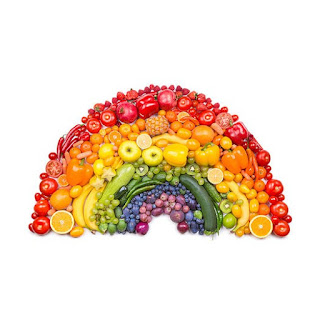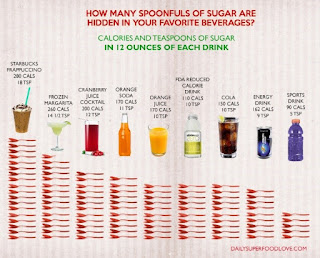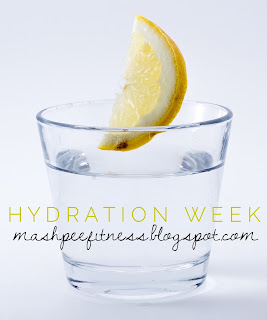It’s apple season! We all have our favorite types of apples—my personal
favorite is Macintosh—and ways to incorporate apples into our diet (apple pie
for the win!) but have you ever used Apple Cider Vinegar (ACV)? Here are some benefits:
Helps Lose Weight
Always check with your doctor or nutritionist before adding anything new into your diet but when taken before meals, ACV lowers the glucose and insulin levels
in the blood after the meal. This has a threefold effect of keeping one
full, reducing fat storage, and improving risks of heart attacks caused by
glucose spike. Take 1 tablespoon diluted in 1 cup of water before a
meal daily. Do not have more than 2 tablespoons per day.
Offers Cosmetic Benefits For Skin And Hair
ACV is popular as a natural hair and skin care remedy. Here are
some ways you can use it. Remember, these are home remedies that have been used
by individuals, but until scientific study backs up wider use, you may want to
try these with some caution – and only if your skin and hair are not too
sensitive. Always test a small patch of skin first to ensure you don’t have an
adverse reaction to the remedy.
- Skin Toner
And Facial Cleanser: Mix a tablespoon of ACV into a cup of clean water and dab
onto your face with a clean cotton ball. You should feel your skin tighten and
your pores should close up. Rinse off once dry.
- Sunburn Remedy: If you have a
sunburn, applying diluted ACV (about half a cup to every four cups of water)
can help heal the skin and may even prevent blistering.
- Dandruff Remedy: For dandruff or
itchy scalp, rinse hair and scalp with ACV that has been added to your regular
shampoo. You could also just rinse it through with a mix of plain water and
ACV, with both in equal amounts.
- Natural Deodorant: The acetic acid
in ACV kills the bacteria on your skin that decomposes sweat and creates
body odor. Dip a cotton ball in a 1:1 ACV and water mixture. Swab your armpits
with it. Let it evaporate. Then powder the armpits with a 1:1 cornstarch and
baking soda mixture to keep dry. If you are worried about the vinegary
smell, just add a few drops of your favorite essential oil.
Detoxes Your Body
ACV also features in detox regimens. That is because it may bind
to toxins that have accumulated in your body and help expel them. As toxins
build up in your body, its ability to function at its best also declines.
Taking ACV may help offset some of that.
Lowers Blood Pressure
ACV may also have benefits for those with high blood pressure.
Animal studies have proven the hypotensive action of the vinegar, showing that
it can lower blood pressure possibly due to the acetic acid in it. However,
human studies must be done before it can be suggested as treatment for the
problem. It also helps that the potassium in ACV eases tension in your blood
vessel walls, lowering blood pressure.
Alleviates Plaque Psoriasis
Plaque psoriasis causes red raised patches and silvery skin to
develop in those afflicted. Besides the knees, elbows, and lower back, it can
also leave you with a scalp that’s itchy and painful. According to the National
Psoriasis Foundation, using ACV as a rinse on the scalp can relieve symptoms
like itching and associated pain or discomfort.
Improves Insulin Sensitivity In Diabetics
Insulin resistance and diabetes have the uncomfortable ability to
make life that extra bit challenging. Which is why the antiglycemic effect of
ACV is so important. ACV can improve insulin sensitivity in those who have type
2 diabetes. It ups the glucose intake by the tissues of your body and prevents
the complete digestion of complex carbs. The result are blood glucose levels
dip, enabling you to avoid spikes and fluctuations that diabetics dread. With
better control over diabetes, you are that much closer to getting your health
back on track.
But here’s where it gets tricky. Taking ACV with blood
glucose-lowering medicines may dip your sugar levels below normal, leading to
hypoglycemia. So always ask your doctor.
Reduces Bad Cholesterol And Increases Good Cholesterol
Another area in which ACV makes a mark is heart health. If you are
hoping to ward off cardiovascular illness, taking some ACV can help.
The antioxidant polyphenols in it can help lower the “bad” LDL cholesterol
levels in the body. Chlorogenic acid, one such polyphenol, also does not allow
the LDL to oxidize and form fatty deposits in the arteries. This helps keep
your blood pressure in check and your heart in better shape.
By improving your heart health, you boost overall fitness. You
may, therefore, be able to stay active and build up the stamina to work out –
good signs if you want to lose weight.
Even if you eat a cholesterol-rich diet, like fatty meats and
dairy, drink a little with warm water before all meals to improve
digestion and reduce serum cholesterol levels.
Stimulates Growth Of Helpful Gut Bacteria
ACV is a functional food that helps you keep a favorable balance
of gut flora. Considered a prebiotic, ACV can also help stimulate the growth of
good bacteria in your intestine. These are needed not just for good digestion
but also for health and well-being and enable the body to fight off infections
better. A tablespoon of ACV mixed with water is a good aid for digestion
too. Apple cider vinegar can also
treat acid reflux. Drink 2 teaspoons mixed in a glass of water at each meal.
Protects You From Fungal Infections
ACV has antifungal properties. This is invaluable when dealing
with common problems caused by the growth of the yeast candida, also
responsible for oral thrush. Research has shown it to be an effective
antifungal agent with therapeutic potential in problems like denture
stomatitis, which is the inflammation and redness of the area beneath a
denture.
Other Possible Benefits
There are a lot of popular claims about how ACV can cure the
common cold, treat eczema, and get rid of warts. But we do not yet have any
scientific evidences to prove these, so we cannot recommend ACV for these
purposes. But you can of course go right ahead and drink ACV for all its other
benefits.
How To Have ACV For Health Benefits
Whatever your purpose, ACV can be consumed in a few popular ways.
Common dosages range from 1-2 teaspoons (5-10 mL) to 1-2 tablespoons (15-30 mL)
per day. Do not go above that, because excess consumption may have harmful
effects.
- Plain ACV: If you have a stomach for it, simply drink up the
dosage suggested by your naturopath or specialist, or have a therapeutic dose
of about a teaspoon before each main meal as most people do. Make sure to wash
down with a glass of water as ACV can erode tooth enamel and burn the tissue of
the esophagus.
- ACV With Warm Water: Another popular way is to mix the apple cider
vinegar with a glass of warm water so it goes down easy.
- ACV In Drinks: Simply add ACV to water, add some honey, and you have
a refreshing drink. You can also add some to smoothies or juices.
- ACV In Food: You can also add it to salad dressings and marinades.
Also use it as a glaze or baste meat and vegetables with it.
Should You Have Raw Or Organic ACV?
Raw or organic apple cider vinegar usually refers to the
unfiltered version of the vinegar. It has a cloudy appearance and contains some
of the bacteria involved in the fermentation process as well as enzymes and
protein strands – also called the “mother.” Non-organic ACV is pasteurized and
its nutrient content is thought to be lower than organic ACV.
While some people believe that the “mother” is responsible for all
the health benefits of ACV, this hasn’t been proven adequately via scientific
research. Also, the high bacteria content in the unpasturized organic version
may not agree with everyone.
On the other hand, the acetic acid in both organic and non-organic
ACV has been found to have some marked benefits. Depending on your constitution
and needs, your healthcare provider will be best equipped to recommend one of
the two.













